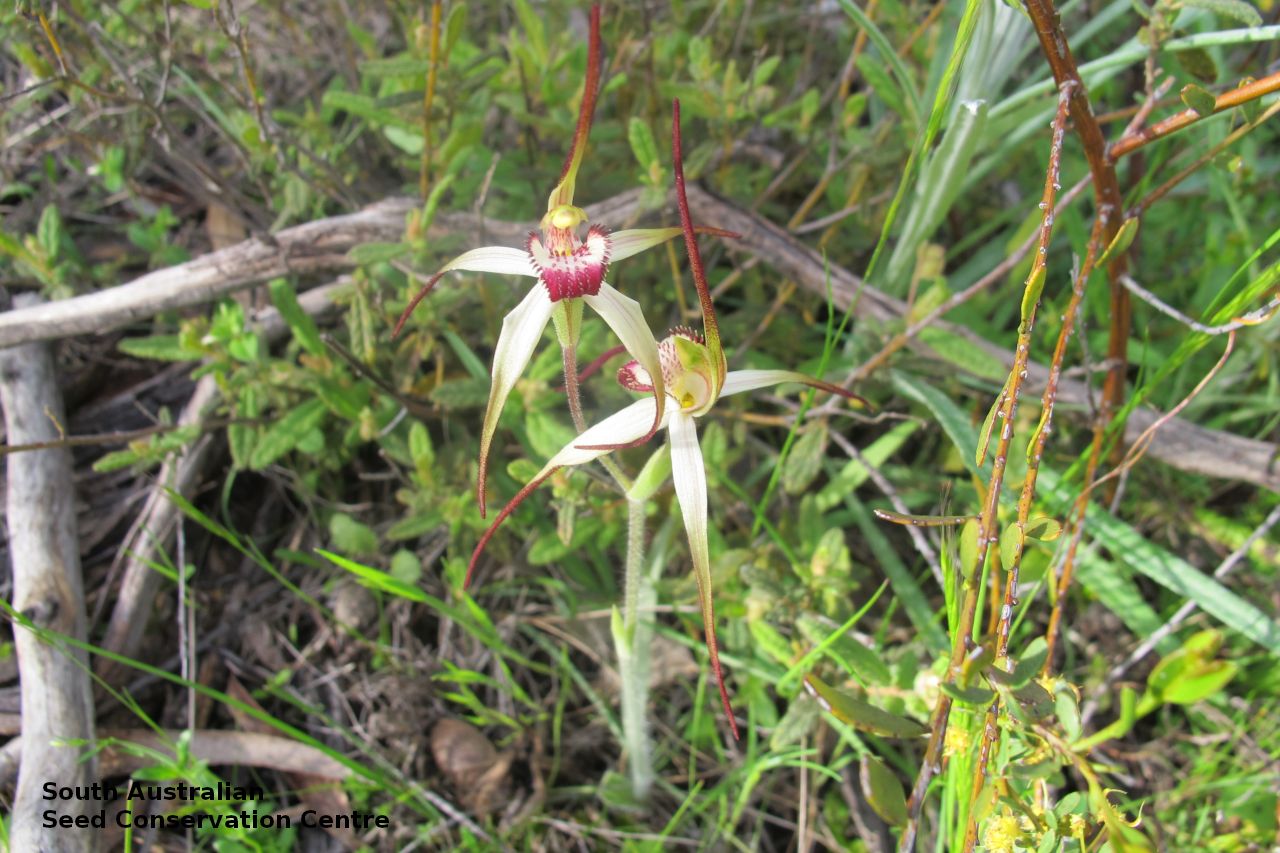
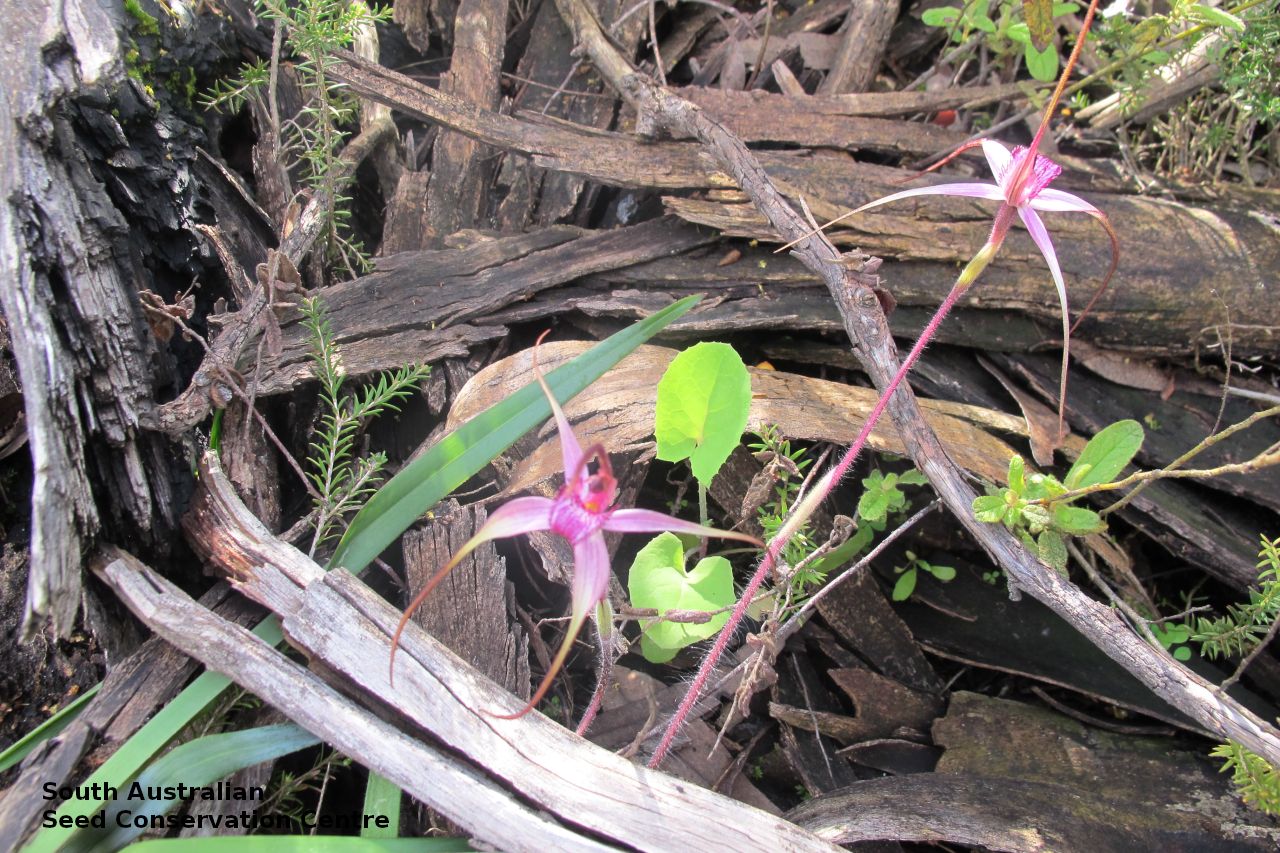
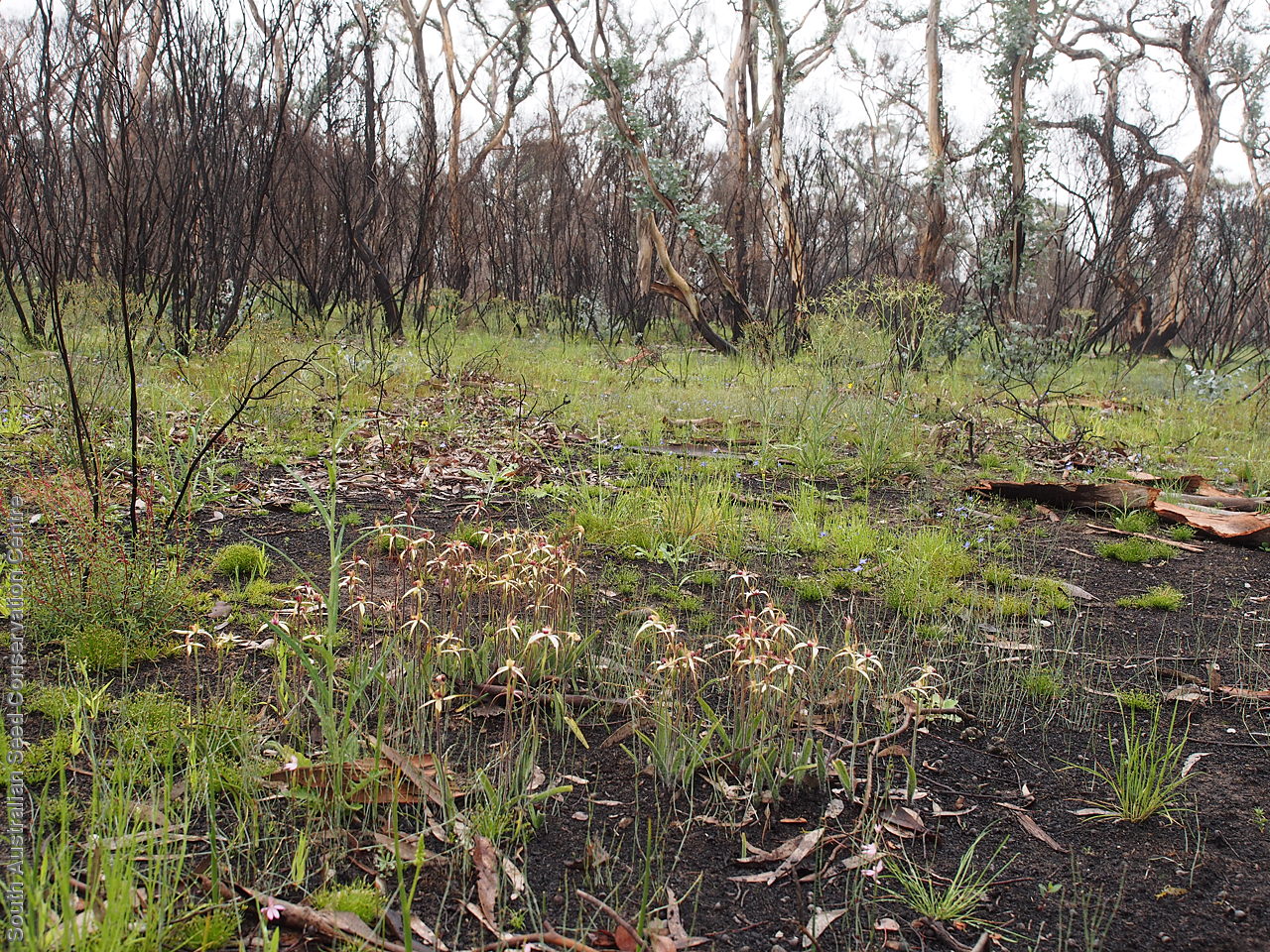
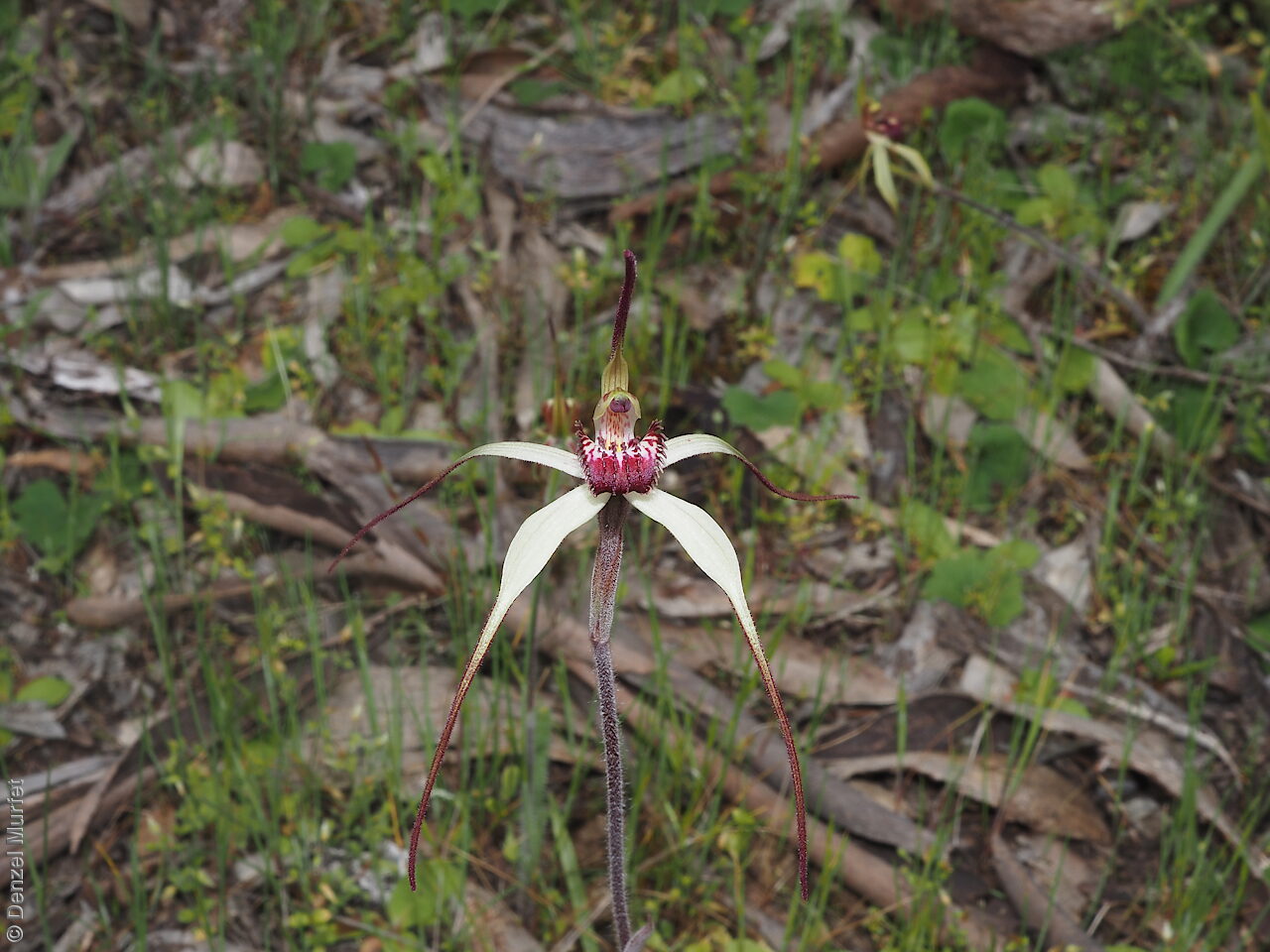
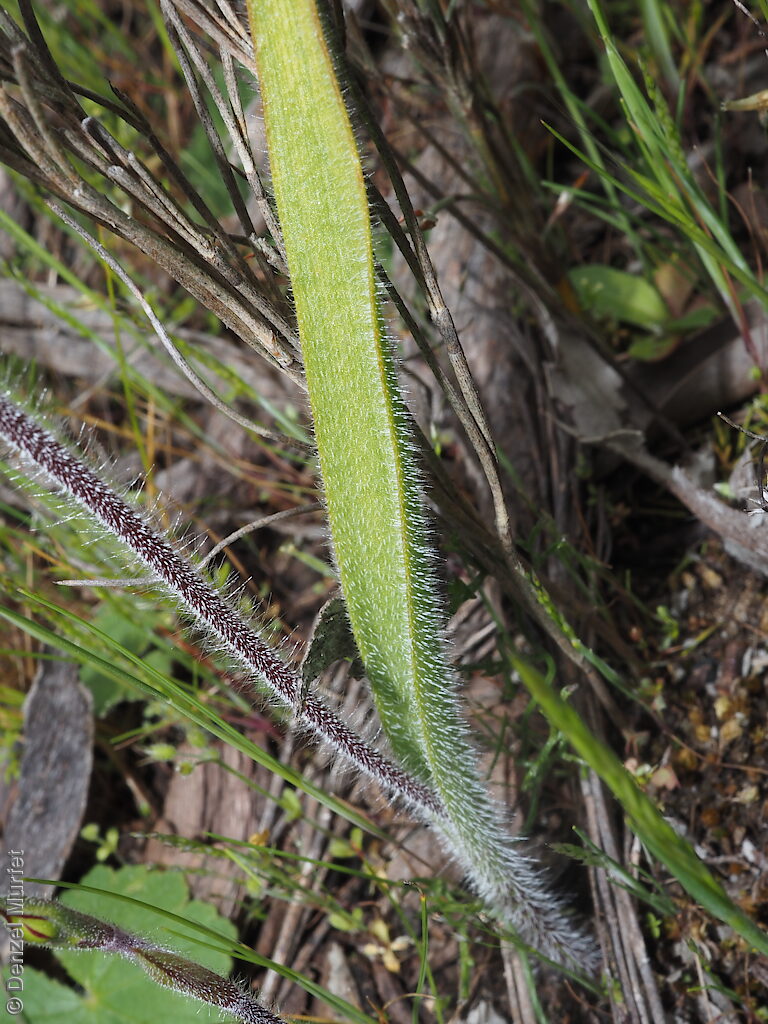
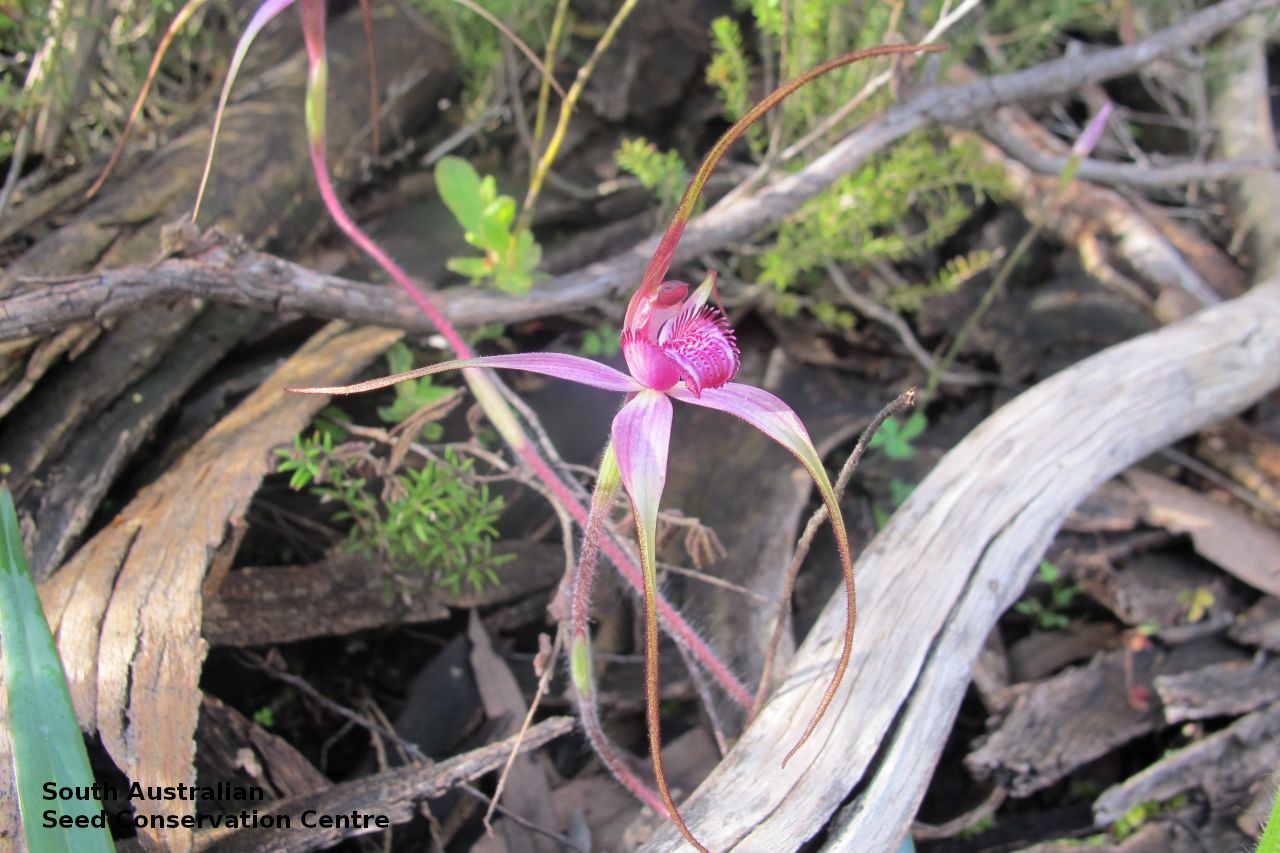
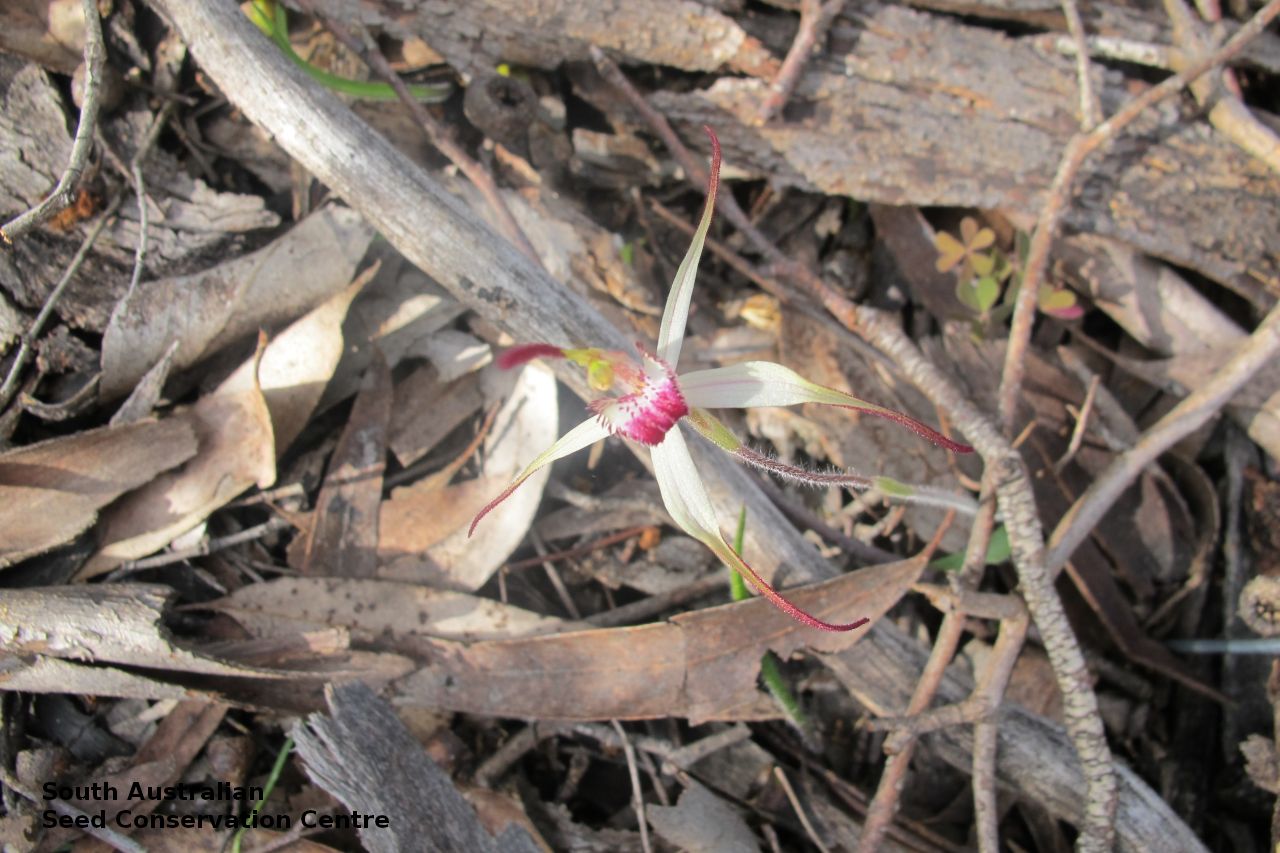
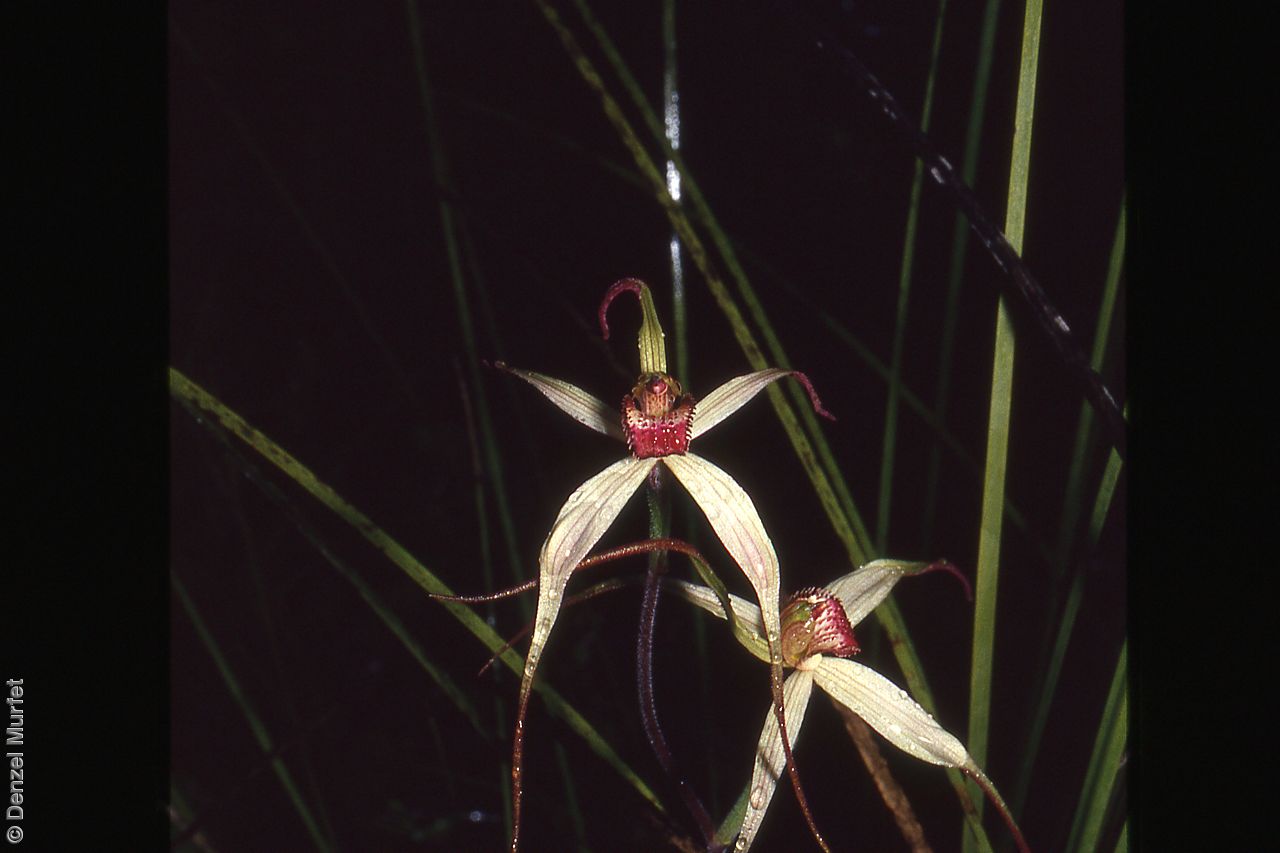
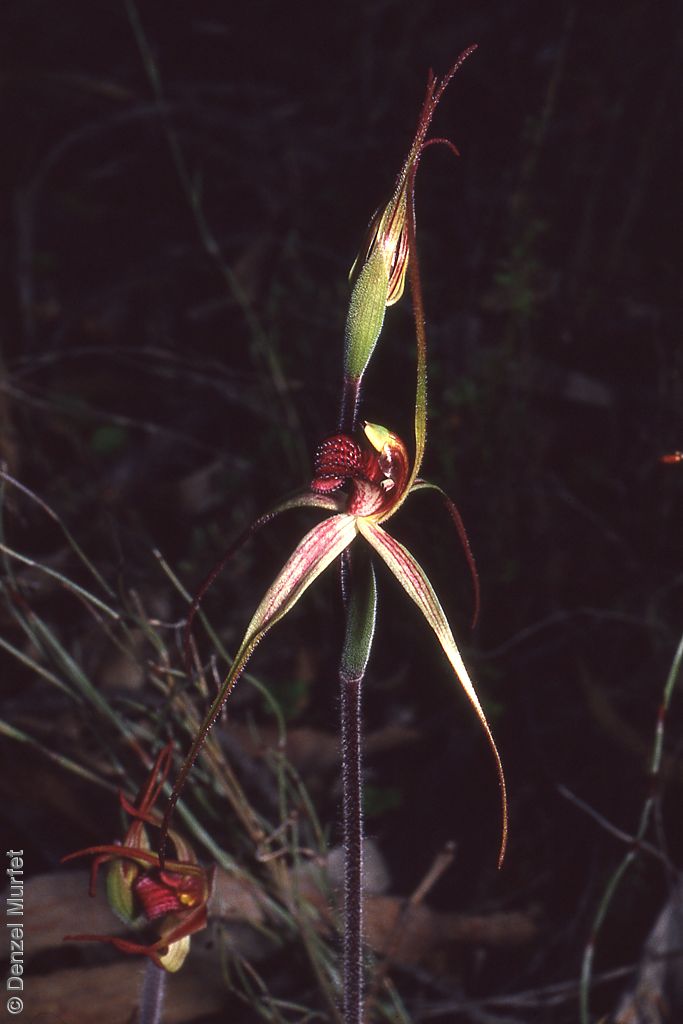
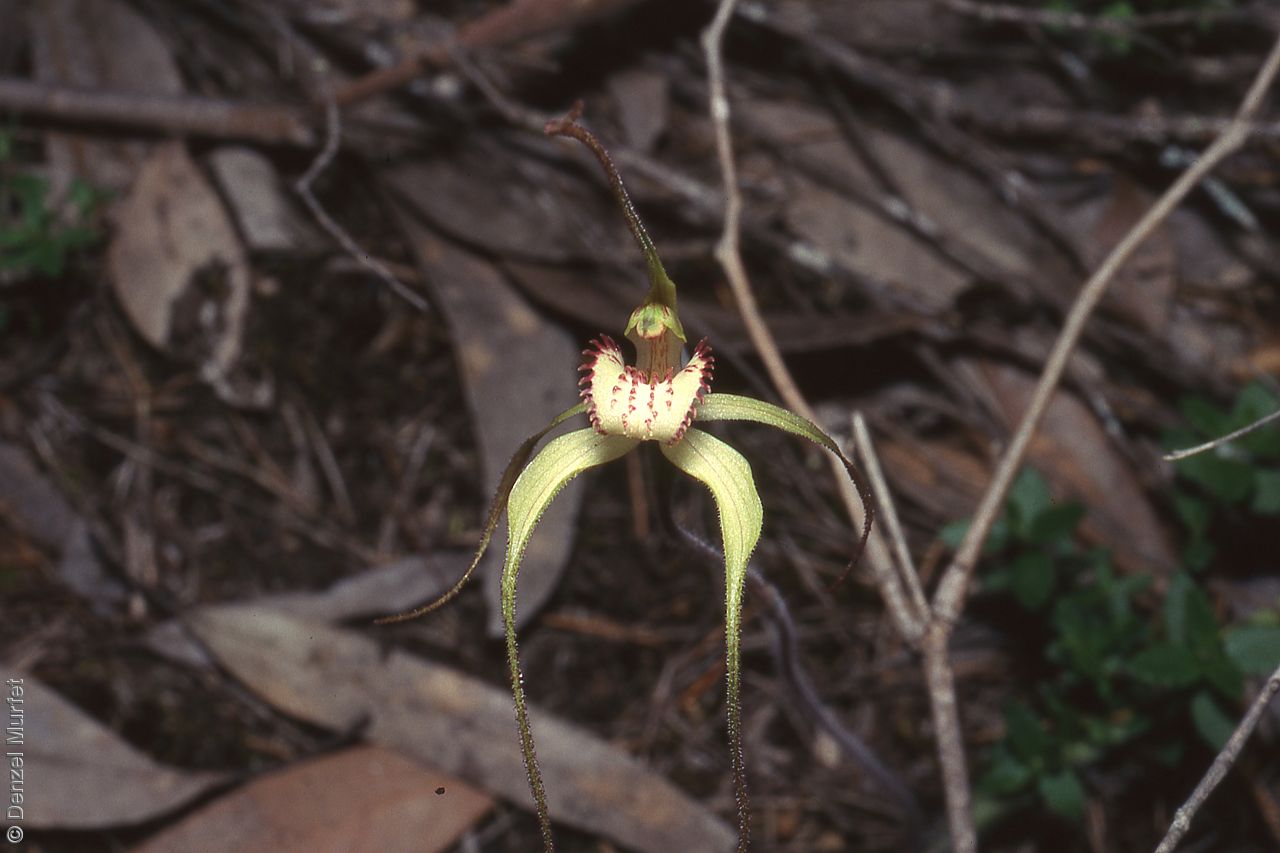
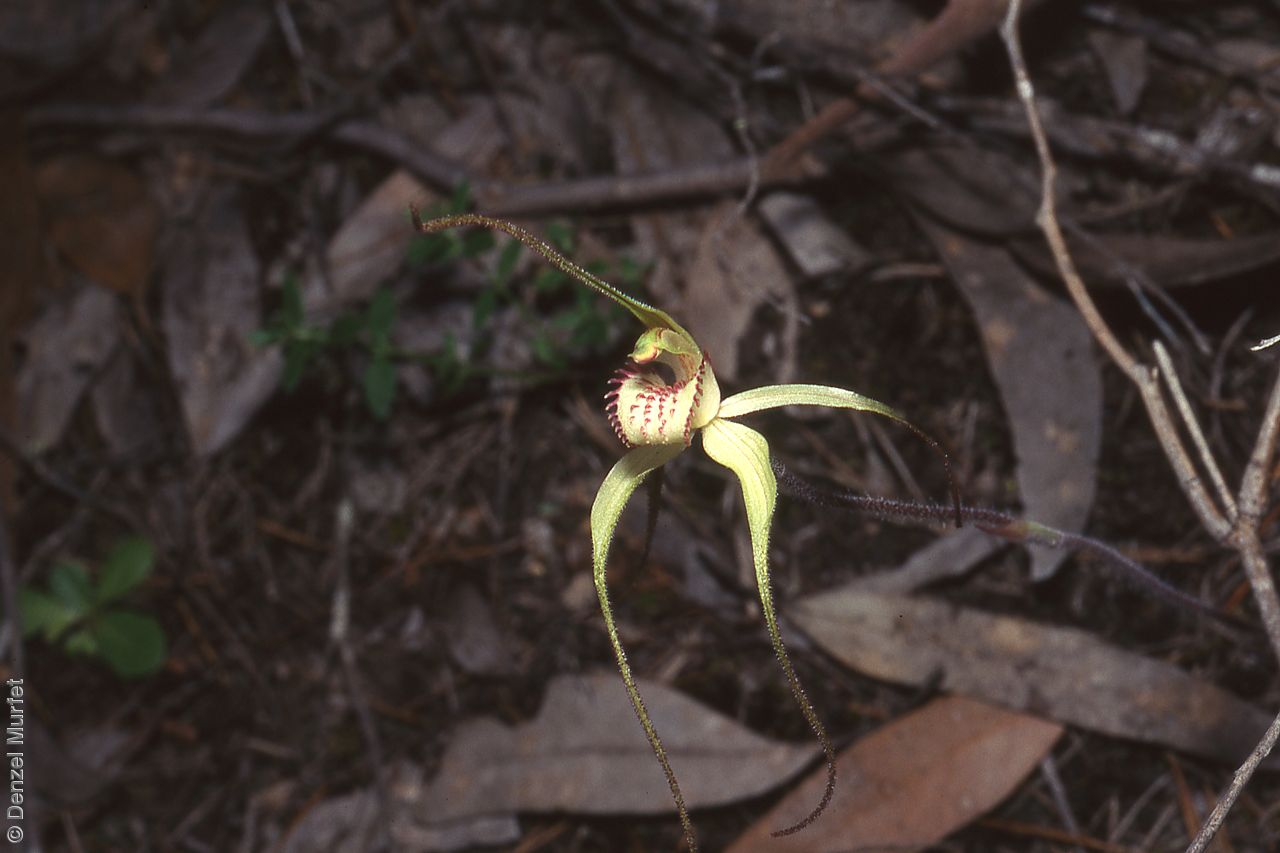

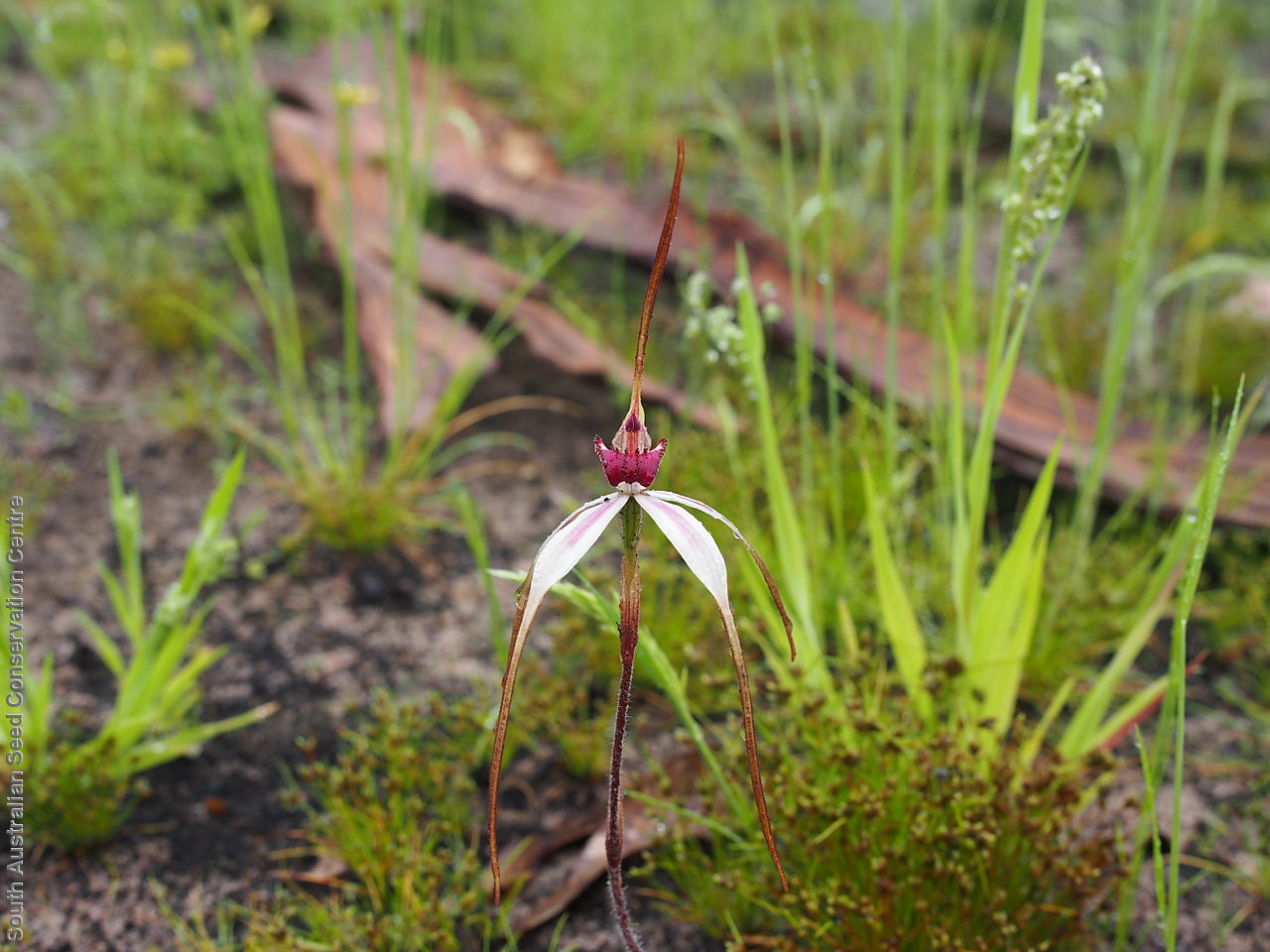
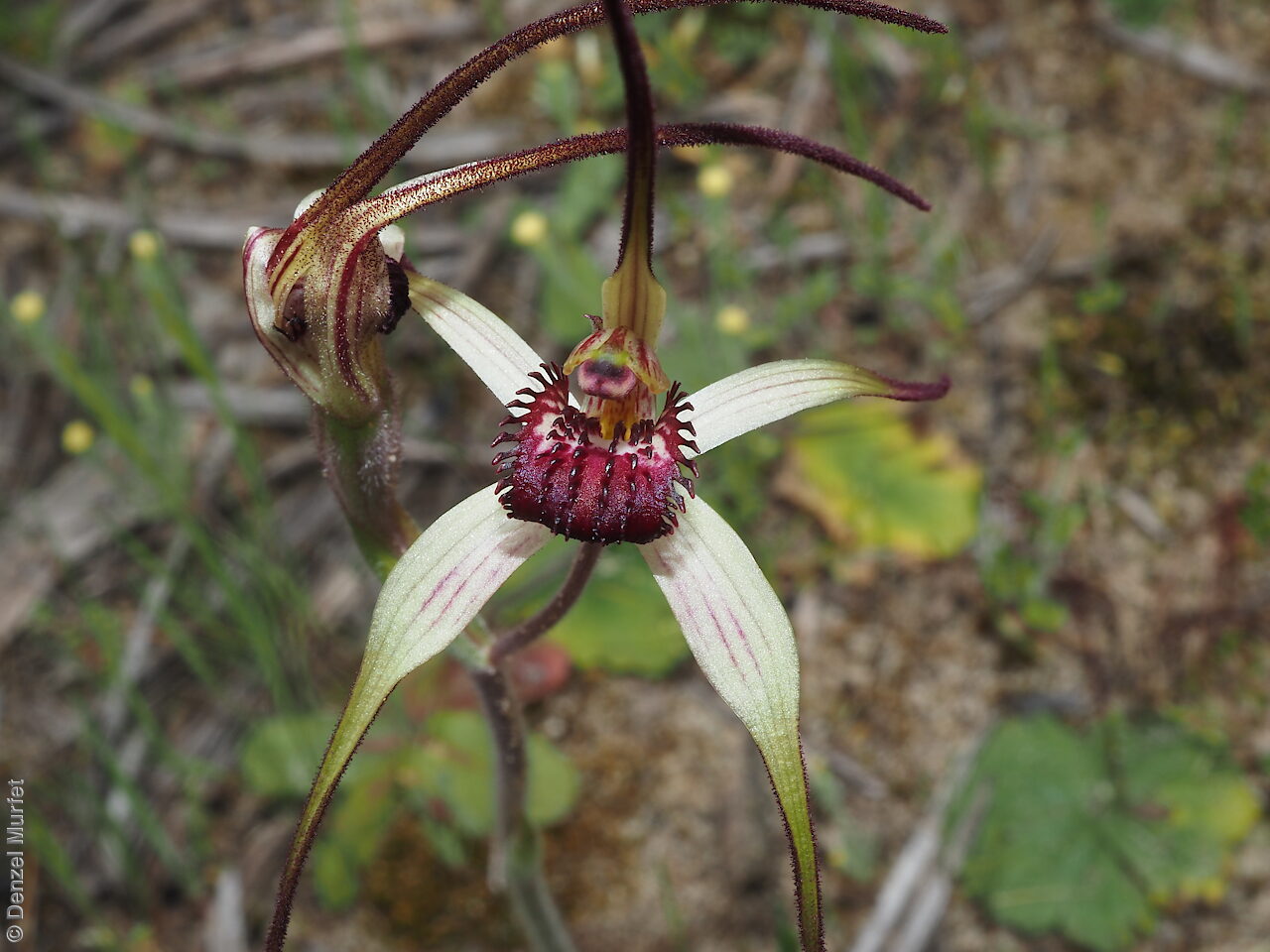
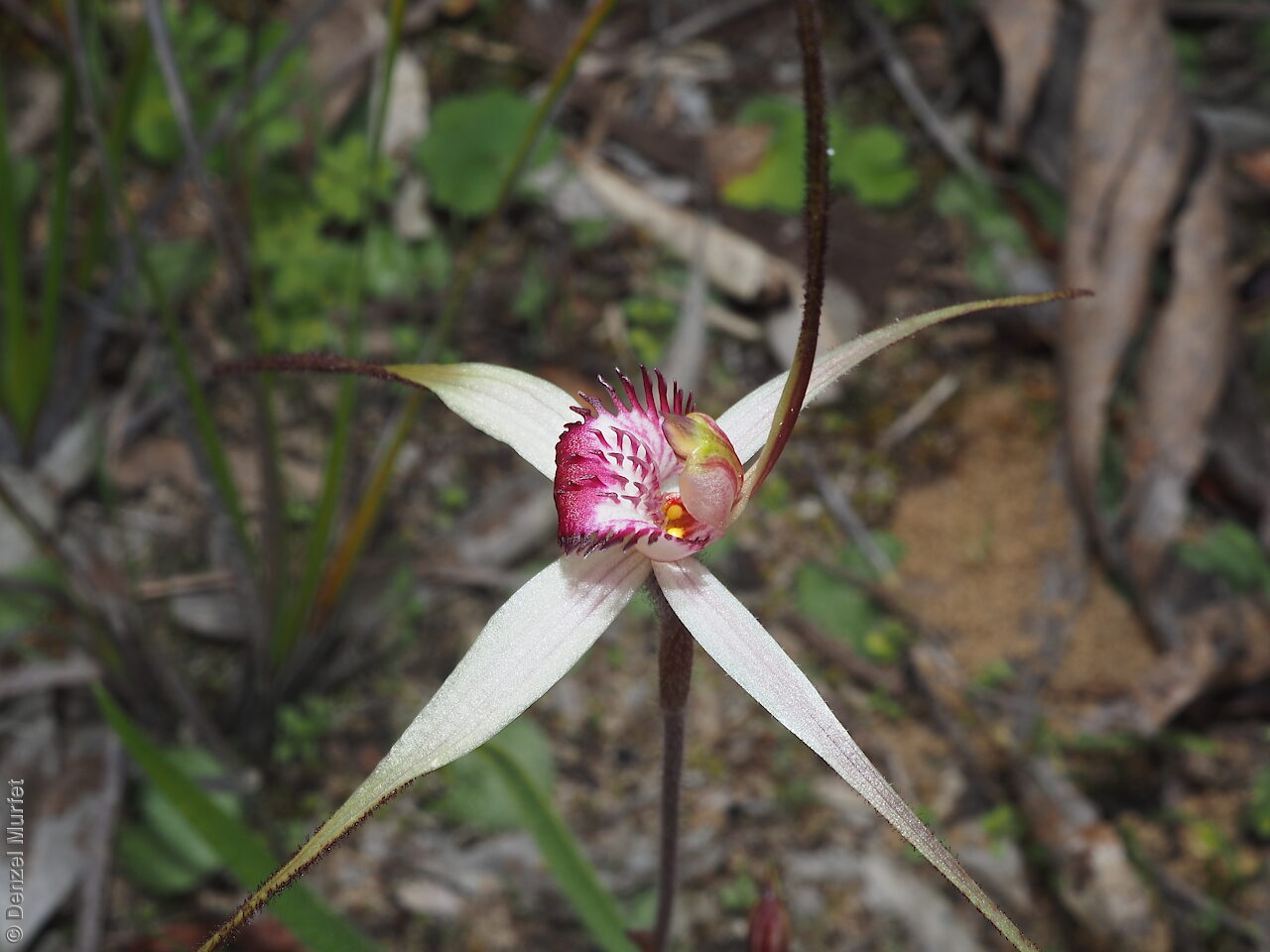
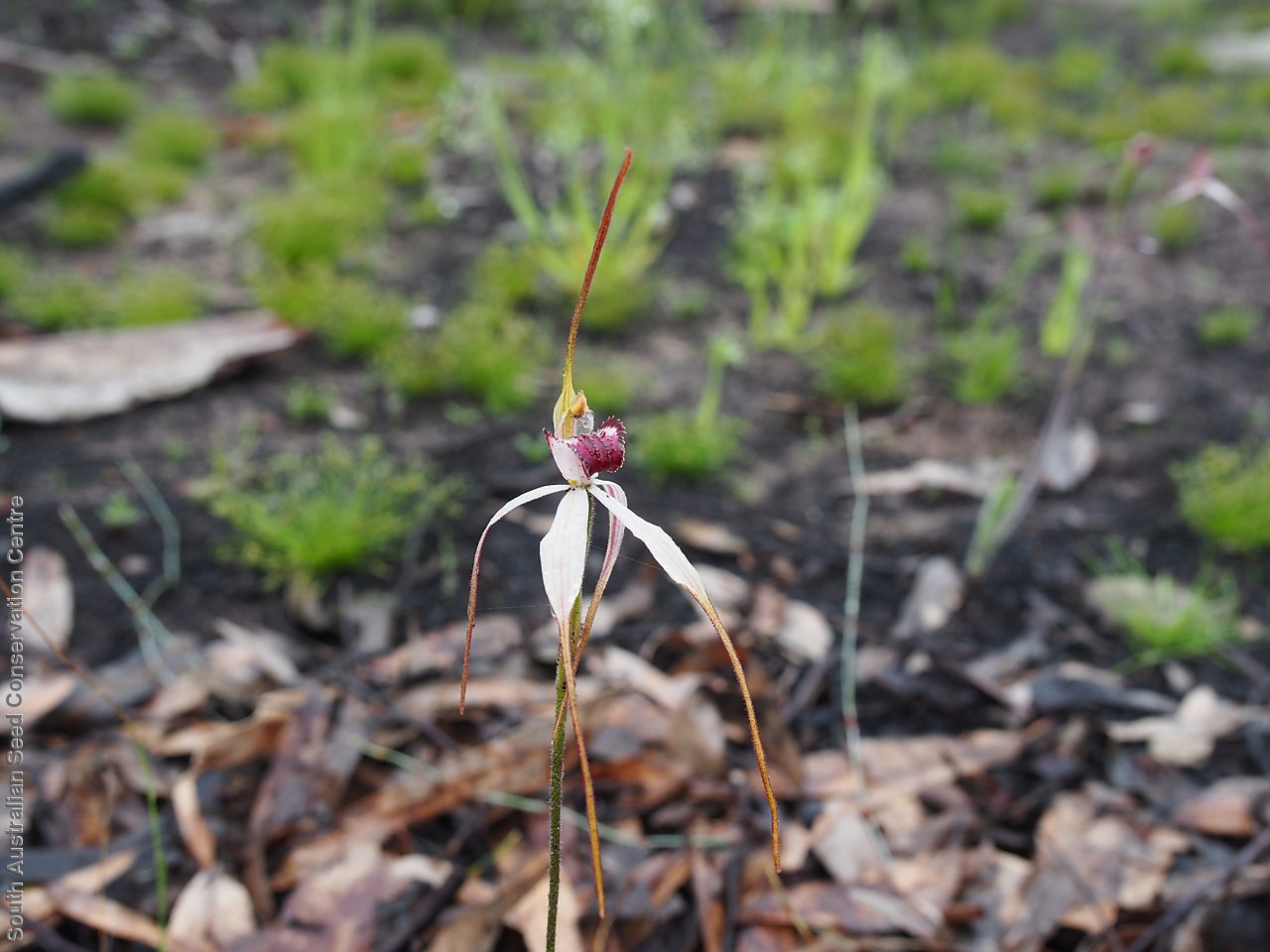
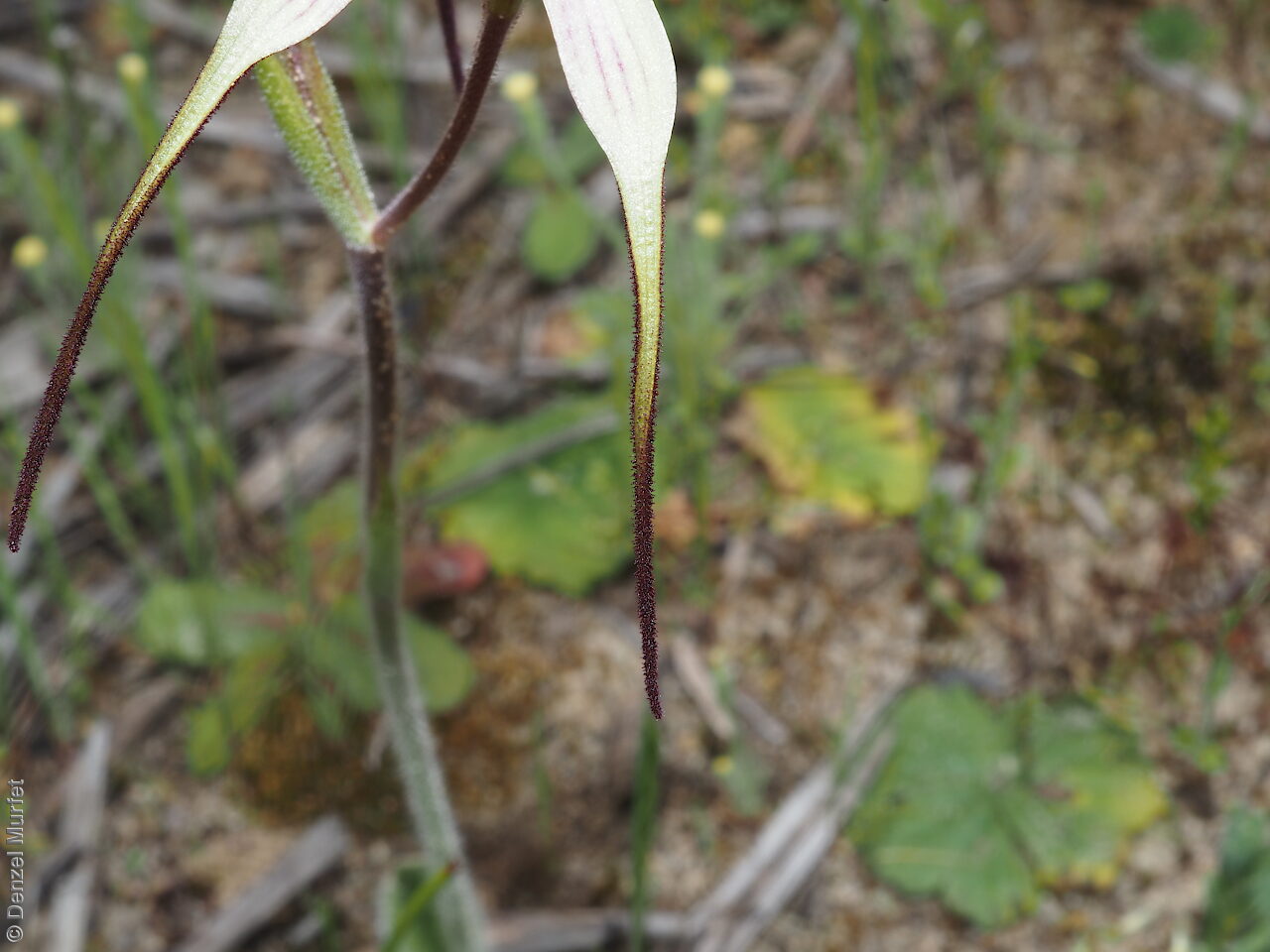
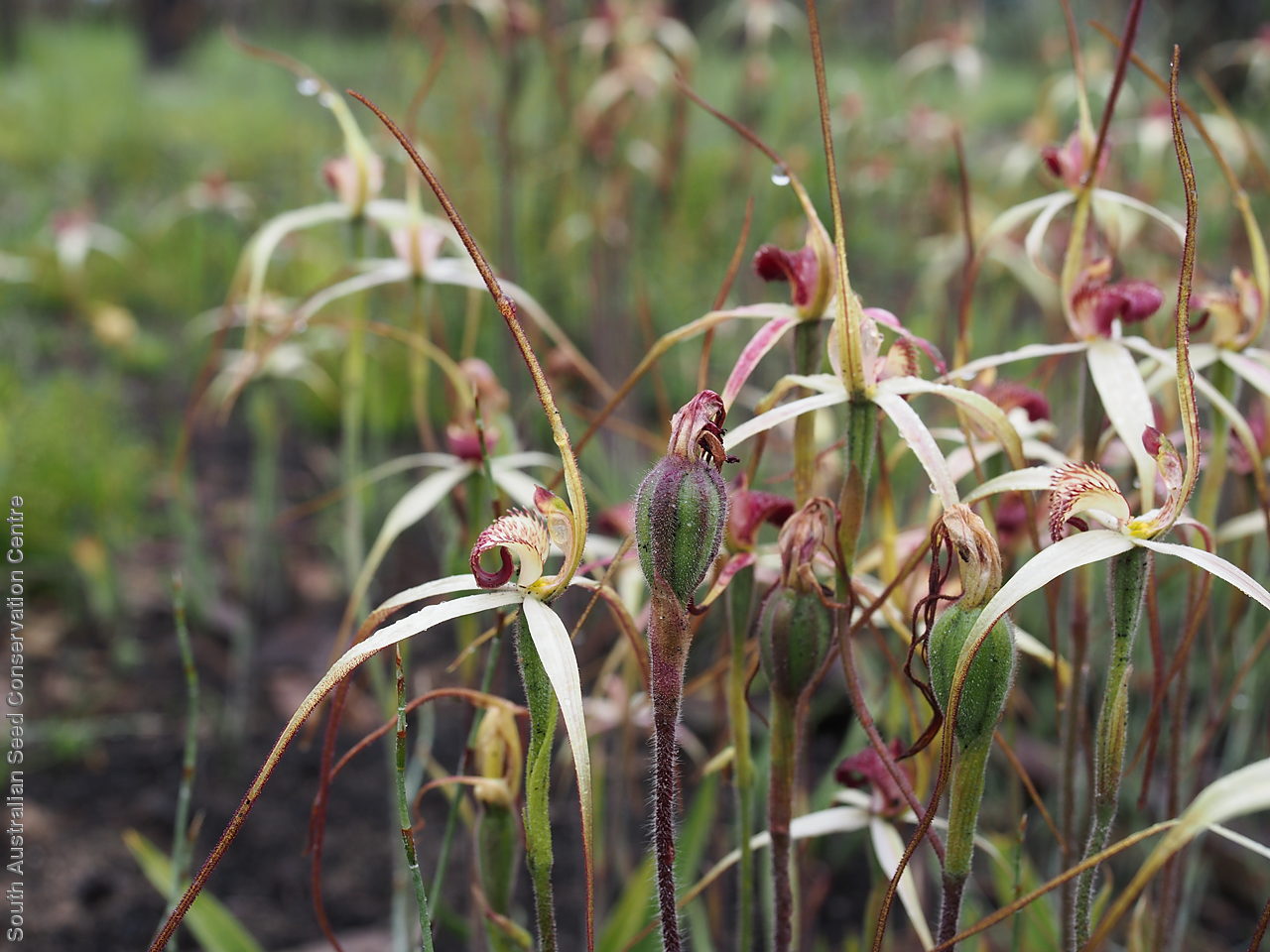
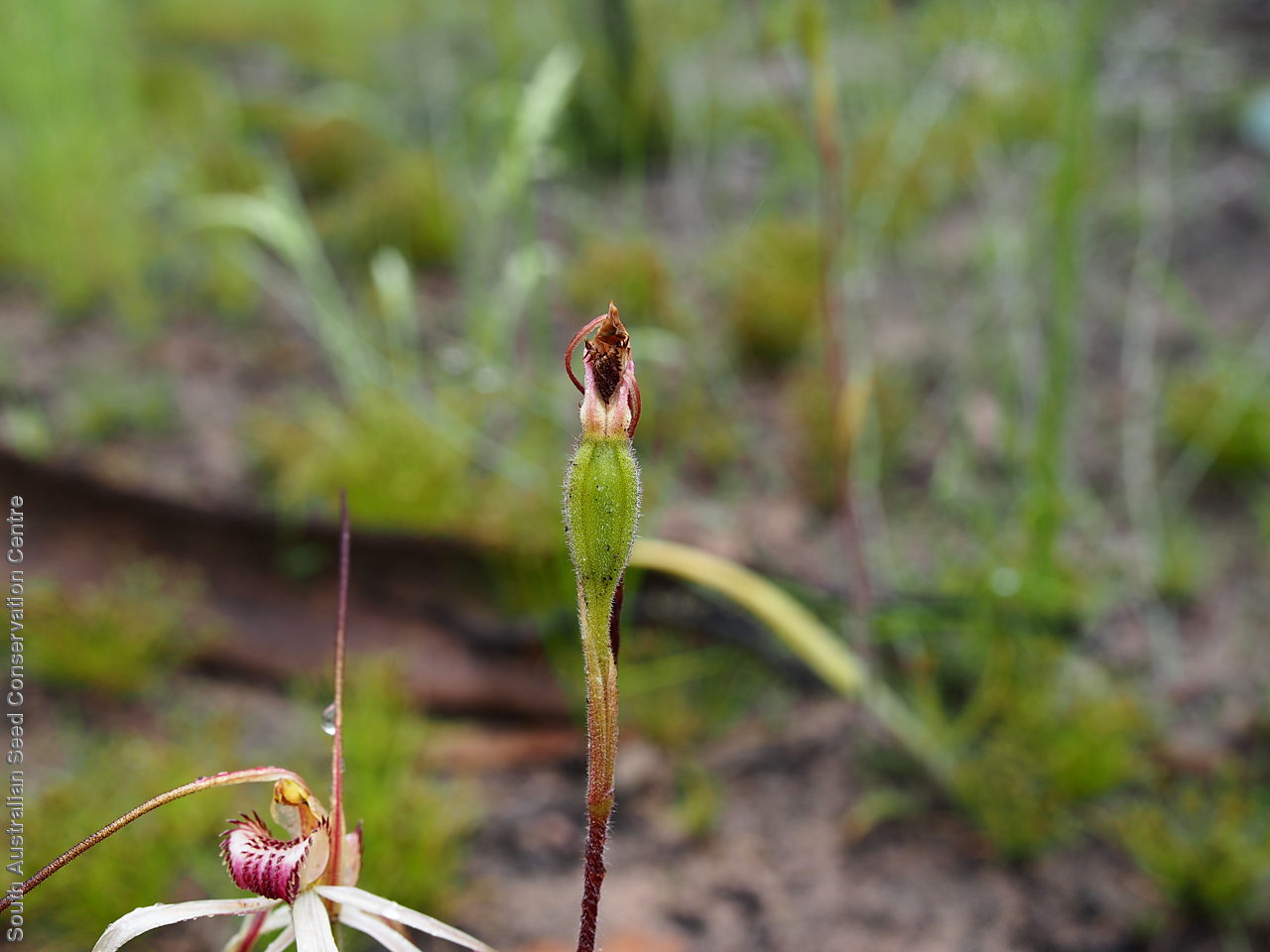
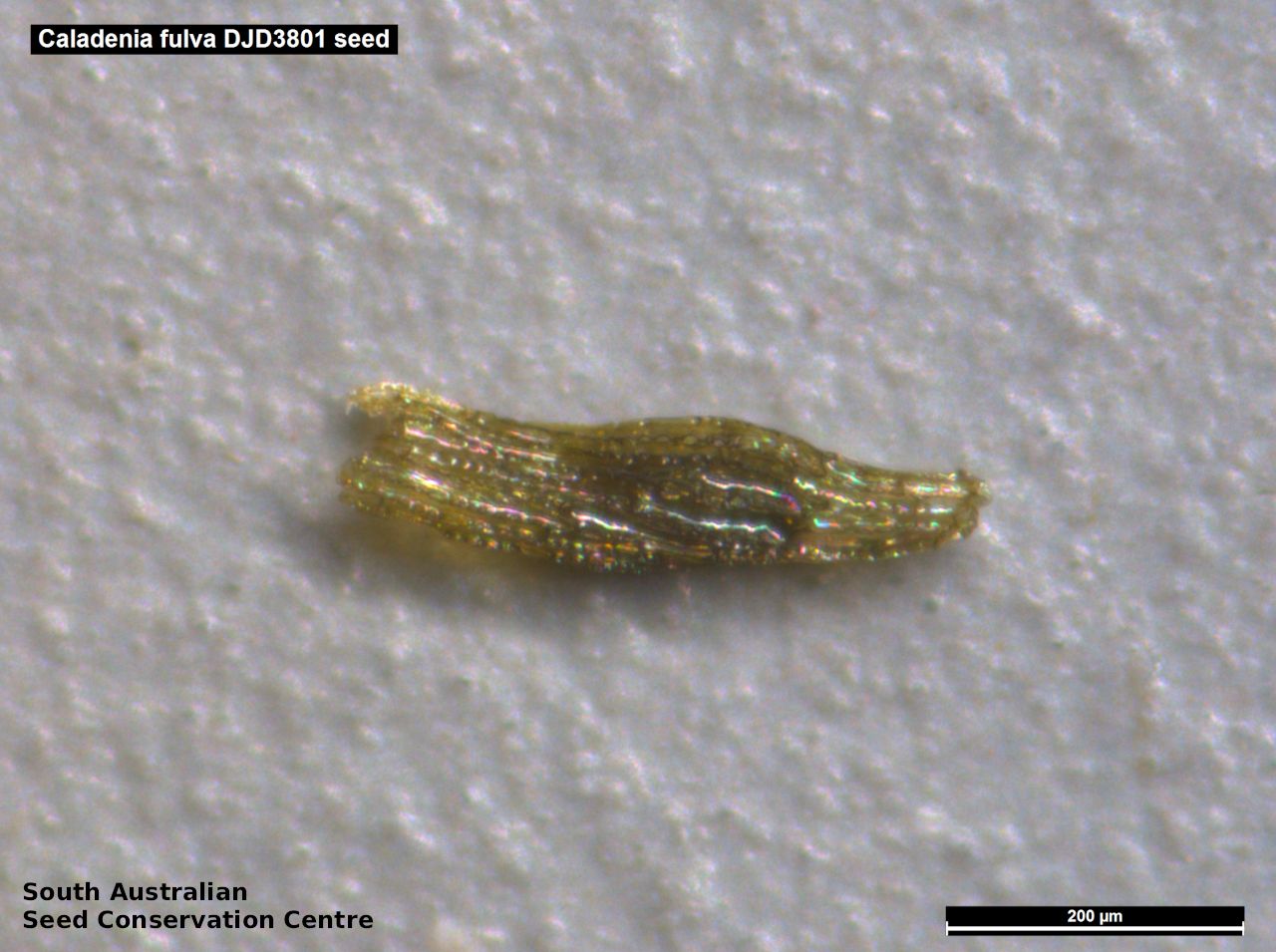
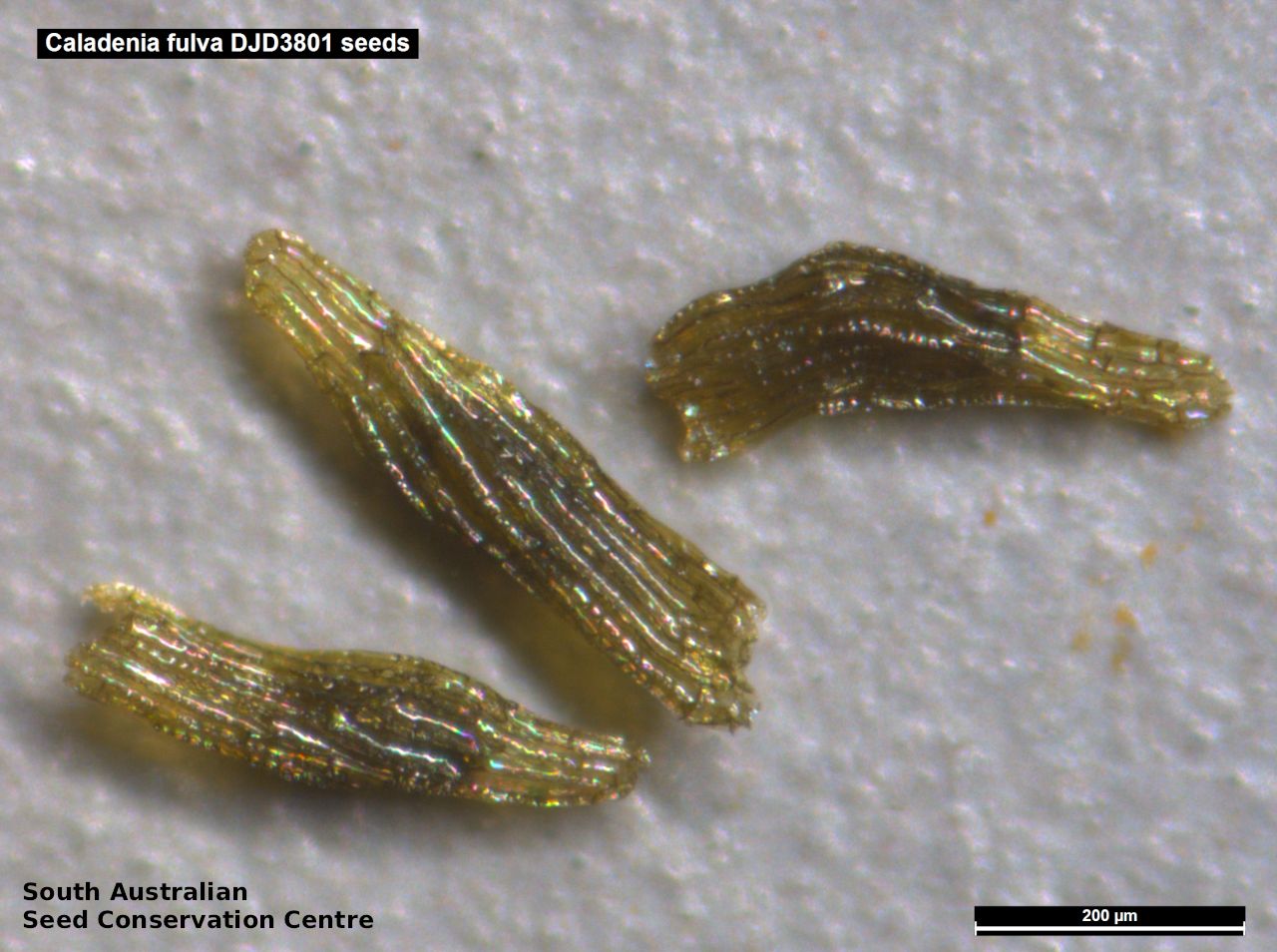
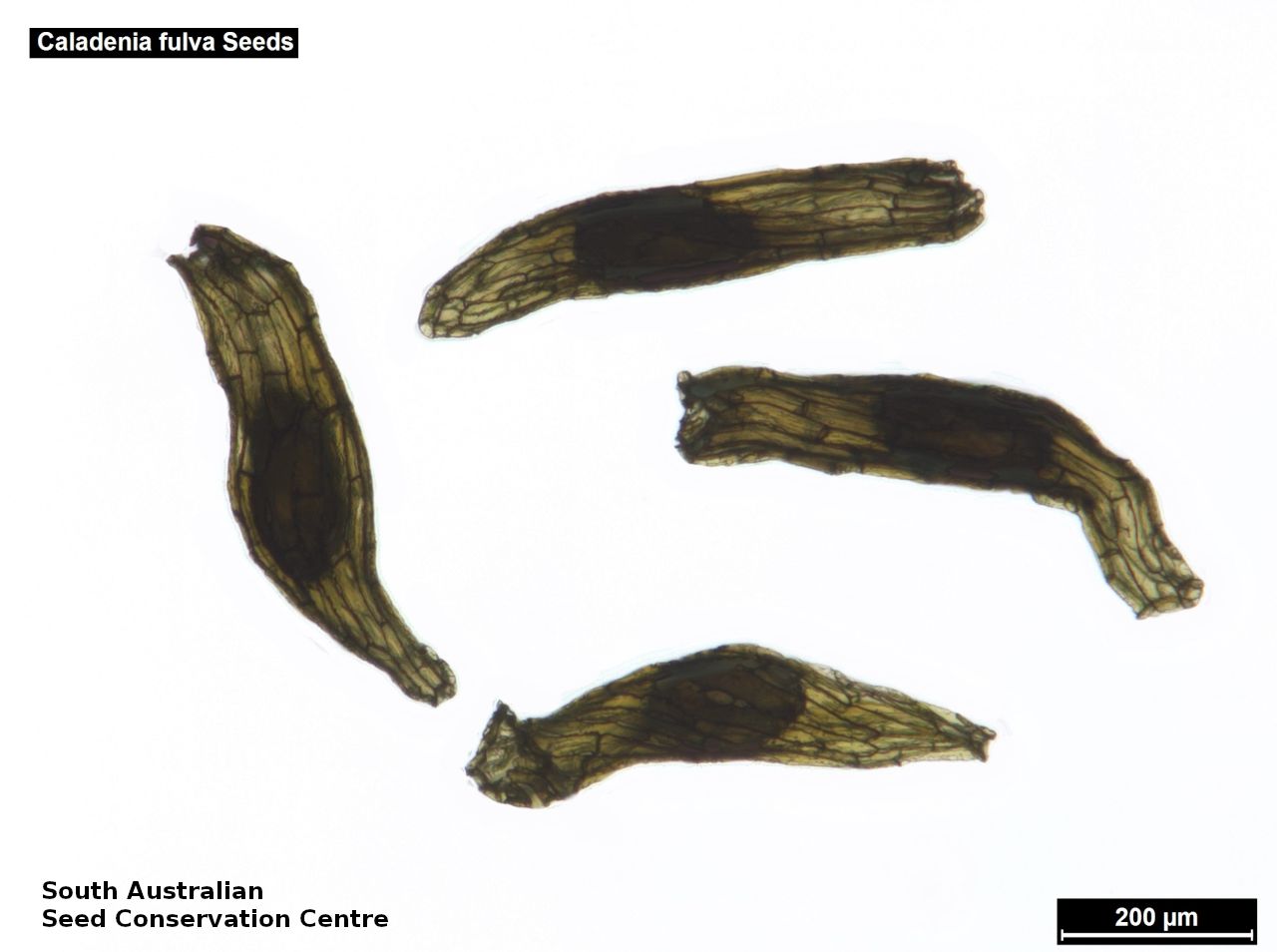


Botanical art
Prior names
Calonema demissum
Calonemorchis demissa
Arachnorchis fulva
Caladenia demissa
Etymology
Caladenia from the Greek 'callos' meaning beauty and 'aden' meaning a gland, referring to the colourful labellum and the glistening glands at the base of the column that adorn many of the species. Fulva from the Latin 'fulvum' meaning tawny, referring to the colour of the labellum, outer sepals and buds.
Distribution and status
Found in the south-east of South Australia, growing in woodland and open forest. Also found in Victoria. Native. Very rare in South Australia. Very rare in Victoria. Endangered in Australia under the EPBC Act.
Herbarium region: South Eastern
NRM region: South East
AVH map: SA distribution map (external link)
Plant description
A large annual terrestrial spider orchid that grows to 25 cm tall with one or two flowers. It has a single basal leaf to 15 cm long. Flowers are pale yellow with variable red streaking, the labellum lamina, calli and marginal teeth are deep red, sepals are 80 mm long. Flowering between August and October. Fruits are brown papery ellipsoid capsule. Seeds are very small brown ellipsoid seed with a long cylindrical translucent brown mesh-like covering.
Seed collection and propagation
Collect seeds between December and January. Collect fat capsules as they start to dry and turn brown. Pods will split and release the seeds quickly and will require monitoring. To increase the chances of collecting mature pods, it is recommended that a small breathable bag (ie. Organza bags) be used to enclose the developing capsules. Place the capsules in a container that will hold fine seeds and leave to dry for a few weeks or until the capsule split. Then carefully hold the capsule and tap it gently to release the seeds. Store the seeds with a desiccant such as dried silica beads or dry rice, in an air tight container in a cool and dry place, refrigerator or in liquid nitrogen. For the NVC South East Orchid Project five populations consisting of more than 40 individuals in total were recorded from the Geegeela area. Approximately 1,575,000 seeds (0.58 g) were banked from these populations. Seed viability ranged from 56% to 88%. Seed germination in Caladenia species is difficult without compatible mycorrhizal fungi.
| Location | No. of seeds (weight grams) | Number of plants | Date collected | Collection number Collection location | Date stored | % Viability | Storage temperature |
|---|---|---|---|---|---|---|---|
| BGA | 680,000 (0.409 g) | 15+ | 19-Sep-2013 | KHB738 South Eastern | 1-Nov-2016 | 73% | -80°C |
| BGA | 150,000 (0.094 g) | 3 | 20-Sep-2013 | KHB743 South Eastern | 1-Nov-2016 | 87% | -80°C |
| BGA | 60,000 (0.035 g) | 2 | 1-Nov-2013 | P.Tucker South Eastern | 1-Nov-2016 | 56% | -80°C |
| BGA | 220,000 (0.132 g) | 9+ | 13-Oct-2013 | KHB795 South Eastern | 1-Nov-2016 | 86% | -80°C |
| BGA | 460,000 (0.282 g) | 7+ | 13-Oct-2013 | KHB793 South Eastern | 1-Nov-2016 | 88% | -80°C |
| BGA | 2,147,500 (0.76 g) | 32+ | 17-Oct-2018 | DJD3801 South Eastern | 24-Apr-2019 | N/C | -18°C, -80°C |
| BGA | 372,600 (0.13 g) | 13 | 17-Oct-2018 | DJD3799 South Eastern | 24-Apr-2019 | N/C | -18°C |
Number of plants: This is the number of plants from which the seeds were collected.
Collection location: The Herbarium of South Australia's region name.
% Viability: Percentage of filled healthy seeds determined by a cut test or x-ray.